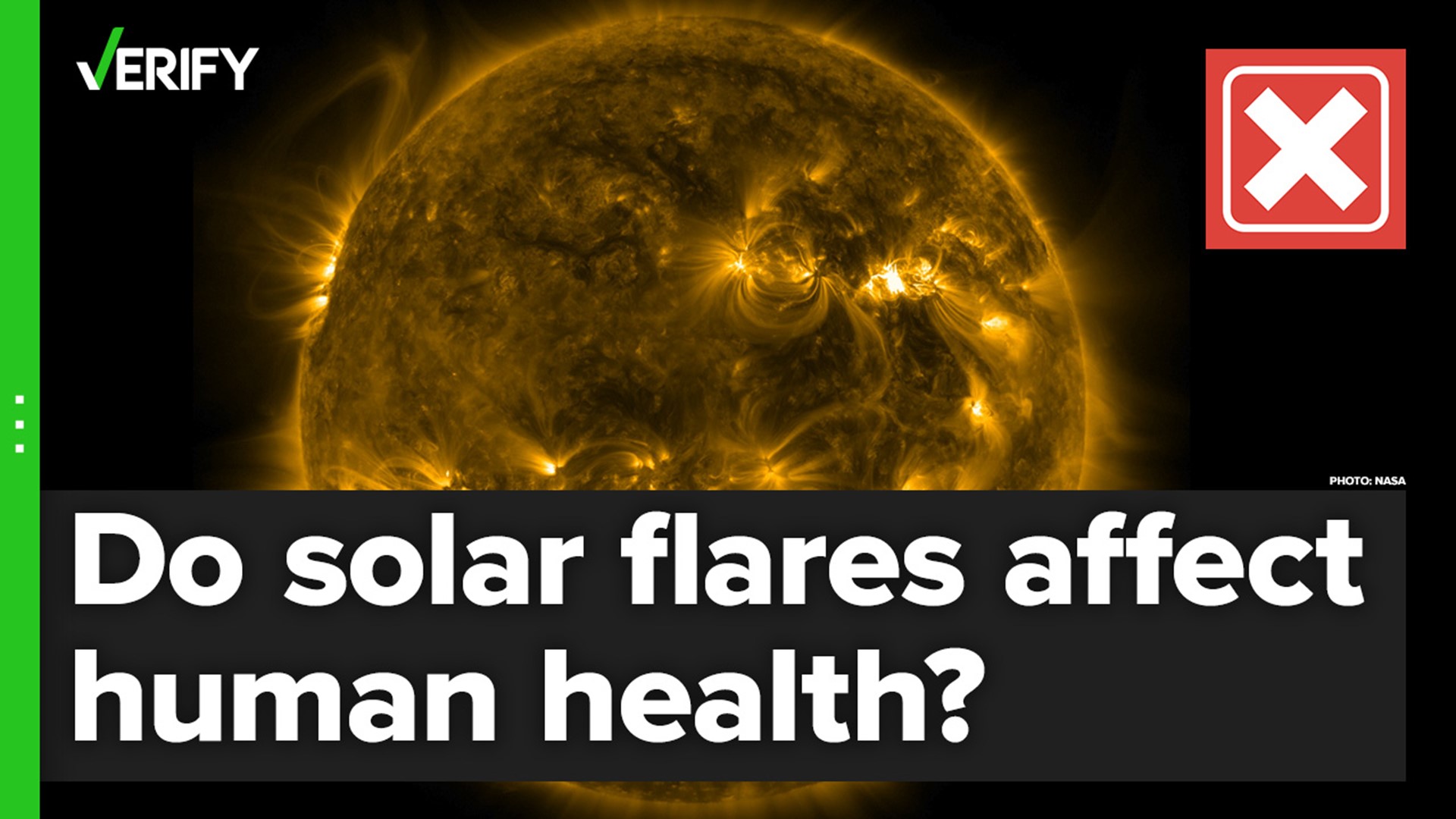CAPE CANAVERAL, Fla. — A NASA telescope has captured the biggest solar flare in years, which temporarily knocked out radio communication on Earth.
The sun spit out the huge flare on Thursday, resulting in two hours of radio interference in parts of the U.S. and other sunlit parts of the world. Scientists said it was the biggest flare since 2017.
Multiple pilots reported communication disruptions, with the impact felt across the country, said the government's Space Weather Prediction Center. Scientists are now monitoring this sunspot region and analyzing for a possible outburst of plasma from the sun, also known as a coronal mass ejection, directed at Earth. The eruption occurred in the far northwest section of the sun, according to the center.


NASA’s Solar Dynamics Observatory caught the action in extreme ultraviolet light, recording the powerful surge of energy as a huge, bright flash. Launched in 2010, the spacecraft is in an extremely high orbit around Earth, where it constantly monitors the sun.
The sun is nearing the peak of its 11-year or so solar cycle. Maximum sunspot activity is predicted for 2025.
Flares and solar eruptions, two kinds of bursts of particles from the sun, can impact radio communications, electric power grids, navigation signals and can threaten astronauts and spacecraft with radiation, NASA says. But Earth’s atmosphere and magnetic field protects people on the planet’s surface from any dangers solar flares could create.
Solar flares are one aspect of what astronomers call “space weather,” or the variations in the space environment between the Earth and the sun, according to NOAA.
“A flare means that the sun kind of burps highly charged particles in a direction,” explained Jackie Faherty, a scientist and educator in the Department of Astrophysics at the American Museum of Natural History.
These burps or bursts of energy often coincide with another feature of space weather, called coronal mass ejections, or CMEs, NOAA says. CMEs are large eruptions of plasma and magnetic field from the outermost layer of the sun’s atmosphere. They can occur either alone or alongside solar flares.
The combination of these two solar events can create a number of issues for infrastructure, including the recent radio shutdowns, but do not have an impact on people living on Earth.

